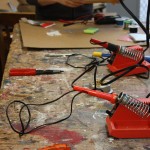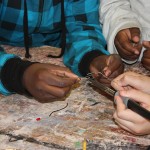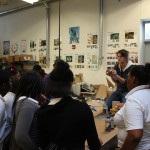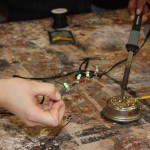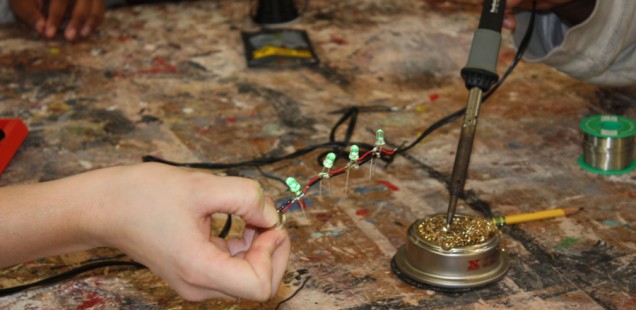
Brightening Brightmoor
After talking to the students and learning more about life in Brightmoor, we saw a general consensus amoungst students that they feel unsafe in their neighborhoods at night. The reality is that there are a growing number of abandoned houses in the area and there are not enough streetlights around. In our discussions with students we heard frequent comments about the lack of lighting, with a strong statement from one young man named Cory who felt strongly about the issue of lighting.
Our response was to try and create a method for brightening the Brightmoor neighborhood through the production of lights. Throughout all of our decisions regarding form and function, we strove to keep costs low, use solar energy, and build with recycled materials where possible. Initially, we focused on making the form similar to that of streetlights, but from this starting point the form began to evolve. Our prototypes went through much iteration as we considered whether these lights would hang from trees, set into the ground, attach to fences, be handheld devices, or attach to bikes. In the end, the bike concept stuck, and we have made certain that the final product will be able to attach to bicycles. This decision, as well as the others we had to make, was driven by the mutual agreement that this project should be easily constructed by, and relevant to, our Detroit Community School partners. Beyond just enabling students to create lights, we wanted our project to empower and excite students by teaching them some of what we know about soldering, electronics, solar power, and craft. For this reason, our project has included a few introductory workshops intended to begin the process of creating a light and to gauge the interest level of students for the subject matter. We found most students to be engaged to the point of visible excitement, and each was willing to be hands on with the project. It was evident to us that there is a high potential for continued interest, as the students seemed proud of working on something so new and complex.
We hope that the impact of our solar light will be felt even after the semester has ended. It was incredibly rewarding to work alongside the students and see them enthusiastically get involved with what we were teaching about circuitry, soldering, solar energy, and working as a team. It is our wish that a project like this could be integrated into the school’s curriculum so that the students can receive more instruction on these skills in order to apply them building and selling lights to brighten the community. Ideally, Universiy of Michigan students would remain involved because sharing what we’ve learned in college reinforces their potential and the friendships made truly enriched the process as a whole.
Sunny Kim, Oleg Kolbasov, James Reich, Stephanie Schutter, Lara Slotnick



